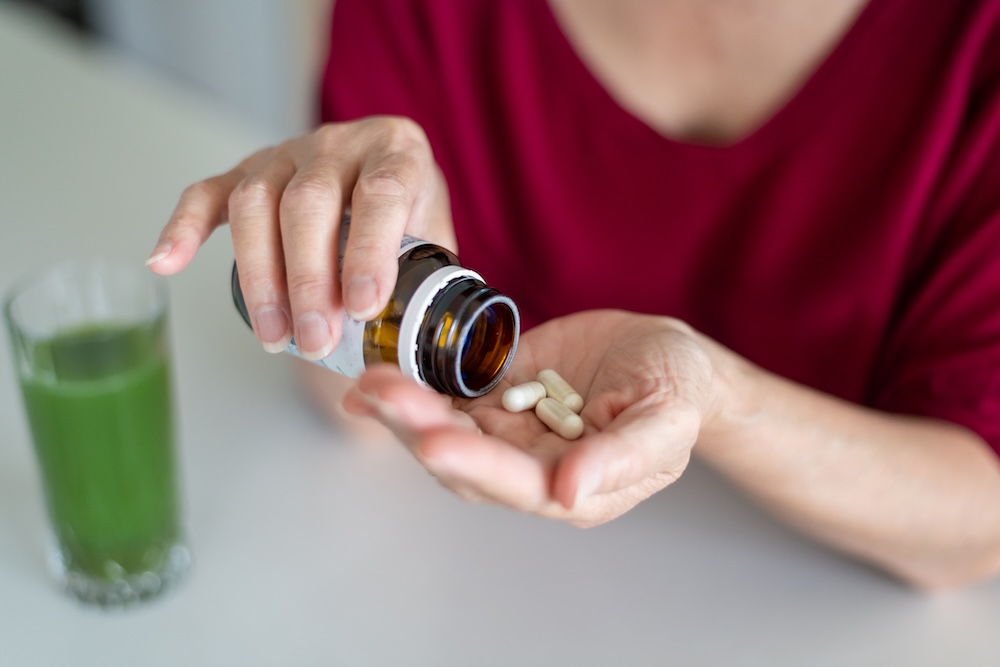Find out how your social drinking habits could cause you issues and why cutting back on your alcohol this year may be worth a go. Spoiler – alcohol and menopause are not the best of friends.
While you absolutely can drink during menopause, there are many reasons it might be worth keeping an eye on how much and how often you are drinking. Alcohol can have an impact on menopause symptoms, from hot flashes to mood swings.
Read on to learn more.
Find what you need quickly
What’s in a unit? Lower-risk drinking and safe limits
People have enjoyed drinking alcohol for a long time. Archaeologists have found evidence of beer drinking dating all the way back to 13,000 years ago. It’s only now though that we are beginning to understand what drinking regularly can do to your health.
Current recommendations are to drink no more than 14 units per week. According to the NHS, this is a lower risk limit rather than a safe amount to consume – current research seems to show that there is no safe amount of alcohol. Higher levels of alcohol consumption are linked to certain types of cancer (including cancers of the throat, mouth and breast), liver disease and cardiovascular disease.
How much is an alcohol unit?
It’s easy to lose track of how much you are drinking, so let’s recap. A unit is 10ml of pure alcohol and thee number of units in a drink depends on its strength and size. Some examples:
- 1 unit – A single measure of spirits (25ml at 40%)
- 2.1 units – A medium glass of wine (175ml at 12%)
- 3 units – A pint of standard beer or lager (568ml at 5.2%)
- 10 units – A bottle of wine (at 13.5%)
It can be easy for units to add up quickly. Two or three pints of beer twice per week may not sound like a lot, but takes you to the upper limit of safe drinking. Cocktails can also be deceptively high in alcohol, with many favourites containing at least 2.5 units per drink.
If you would like to know exactly how many units are in your favourite tipple, you can use a unit calculator.
Can alcohol help you feel better during menopause?
It all comes down to what your specific symptoms are – you may not need to pour your gin down the sink just yet. We are still learning about the risks of alcohol use and also about its benefits.
One study found that drinking small amounts of alcohol can be associated with improved wellbeing through menopause. Likewise, research suggests that drinking small amounts can be associated with lower risks of heart disease. While these findings may seem to suggest some benefits, the evidence available at present still seems to indicate that the potential harms of drinking alcohol generally outweigh its benefits.
It is important to think about your own personal balance of risks and benefits and to ensure that you really are drinking moderately.
Menopause, hot flushes and alcohol
If menopause and hot flushes are the bane of your life, it might be worth thinking about the way you drink alcohol.
Some studies have shown that hot flushes are worse with alcohol, while others have found that alcohol can reduce them. This is rather confusing and more research needs to be done for us to be sure about the relationship between alcohol and hot flushes.
Certain types of alcohol, such as red wine, do seem to be definitively linked to hot flushes. If you struggle with hot flushes, try cutting down on alcohol or switching to different types of drink and monitoring your symptoms.
If hot flushes are still an issue, lifestyle changes and HRT can help. If your symptoms are problematic, speak to your doctor about whether this could be suitable for you.
Menopause, mood and alcohol
Low mood is common at menopause, as are a number of other psychological symptoms including irritability, anger and mood swings. Levels of depression and anxiety also spike around this time.
Alcohol is also linked to mental health issues including anxiety and depression. This is due to the way alcohol acts on the brain.
If you are having a hard time with low mood or other mood changes, talk to your doctor as well as cutting down on alcohol. They may be able to suggest one of a number of treatments, including:
- HRT
- Talking therapies
- Antidepressants
Menopause, sleep and alcohol
Sleep can be a real challenge during perimenopause and well into your postmenopausal life. Physical symptoms include night sweats, hot flushes and aches and pains and, together with hormonal changes, can all contribute to interrupted, unsatisfying sleep.
Although alcohol can make it easier to nod off, it also decreases your sleep quality overall. This is because alcohol reduces the amount of time you spend in the REM phase of sleep. It also means you need to pee more frequently and during the night meaning the few hours you do get is interrupted.
If you are struggling with sleep issues during menopause, it is probably worth thinking twice about that last glass of merlot.
HRT, alcohol and breast cancer risk
HRT is a proven and effective treatment for many symptoms of menopause. However, like all medications, it comes with certain risks and side effects.
If you take combined HRT (with oestrogen and progesterone), one of these risks is an increase in your chance of developing breast cancer. For every 1,000 women who take combined HRT, there will be an extra four who develop breast cancer over the next five years compared to the background risk.
Alcohol is also known to increase your risk of breast cancer. Current evidence actually seems to show that this is more risky than taking HRT. For every 1,000 women who drink two or more units per day, an extra five will develop breast cancer over the next five years compared to the background risk.
Although breast cancer risk is a complex topic, this may be a good time to think about cutting down on your alcohol intake. Other things you can do to reduce your risk are:
- Maintaining a healthy BMI
- Quitting smoking
- Exercising at least two and a half hours per week.
Menopause, bone density and alcohol
At menopause, your bone density and strength decreases. This is due to the decrease in oestrogen levels which happens at this time. Mild cases are known as osteopenia, while more severe thinning is known as osteoporosis.
Contrary to popular belief, your bones grow, change and repair themselves constantly throughout your life. This happens due to a fine balance of bone-dissolving cells (osteoclasts), bone-building cells (osteoblasts) and the hormones which control them.
High levels of oestrogen help to maintain high bone density by influencing this process. Oestrogen reduces the amount of bone which is reabsorbed by osteoclasts, and also helps boost your levels of bone-strengthening calcium. Once the protective effect of oestrogen is removed, we become more prone to thinning of the bones.
Moderate to high levels of alcohol consumption (from one drink per day) have also been linked with osteoporosis. However, evidence is less clear about whether low levels of alcohol consumption can cause the same problems.
So what does this mean for you? The best conclusion to draw from all of this is to think about your own personal risk.
If you are particularly at risk from osteoporosis – for example, if you have a strong family history of the condition – you may choose to be more cautious about your alcohol intake.
Other things you can do to boost your bone mass include regular strength training and considering HRT, which is proven to help.
Menopause, weight and alcohol
You may notice weight gain during menopause, especially around your middle. Extra pounds become more difficult to lose during menopause, so it’s worth noting that alcohol can be a source of extra (and empty) calories.
For example, a pint of 5% beer contains around 240 calories – as much as a chocolate bar or even a sandwich!
Cutting down on alcohol consumption can be a quick win if you are trying to manage your weight. Giving up just one glass of wine per week could save 7,000 calories over the course of a year, equivalent to just under a kilo of fat.
While this sounds like an easy way to lose weight, beware! Non-alcoholic options are often very sugary and high in calories. Ensure that you are switching to low-calorie alternatives to make the most of your healthy choice.
Problem drinking
It is all too easy for problem drinking to creep up on you. You may even notice that you have an unhealthy relationship with alcohol despite drinking within the normal safe limits.
Here are signs it might be time to rethink your drinking:
- Feeling like you should cut down
- Other people criticise your drinking
- Feeling guilty about drinking
- Needing to drink first thing in the morning to steady your nerves or get rid of a hangover
If you need help or advice about your alcohol use, your doctor is a good person to speak to. If you think you could be dependent on alcohol, it is important that you do not stop drinking suddenly. This is because withdrawal can be dangerous and cause serious medical problems including seizures. Instead, speak to your doctor for support in cutting down gradually.
For further help, see:
- NHS on alcohol misuse
- Alcohol Change UK
- Alcoholics Anonymous UK
- Alcoholics Anonymous worldwide
Final word
If you are going through menopause, it is important to be mindful about your alcohol consumption. Be aware of your symptoms and think about cutting down. Swapping to soft drinks could help to put a lid on your hot flushes, mood swings or broken sleep.
Alcohol can also have implications for your long-term health, including the risk of certain cancers, liver disease and osteoporosis. Speak to your doctor if you need help on cutting down.
Find out more about menopause on our blog or in our symptoms library.





